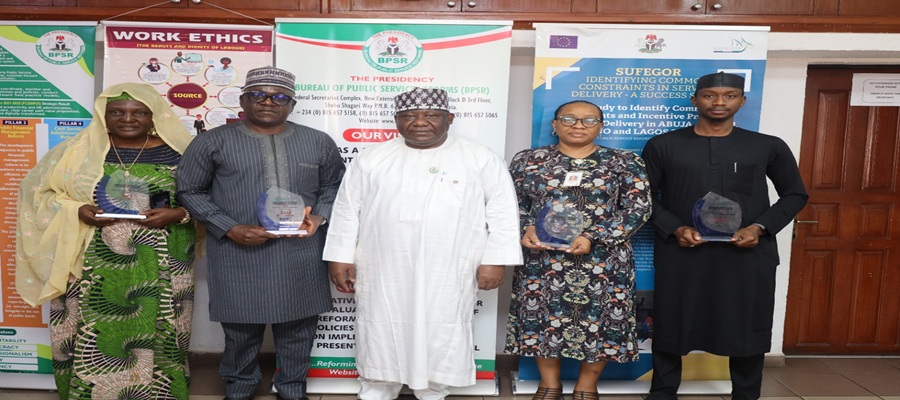Telecom
Abuse of Trusted Applications Grows by 51% in Latest Sophos Report

Sophos, a global leader in innovating and delivering cybersecurity as a service, today released “The Bite from Inside: The Sophos Active Adversary Report,” an in-depth look at the changing behaviors and attack techniques that adversaries used in the first half of 2024.

John Shier, field CTO, Sophos
The data, derived from nearly 200 incident response (IR) cases from across both the Sophos X-Ops IR team and Sophos X-Ops Managed Detection and Response (MDR) team, found that attackers are leveraging trusted applications and tools on Windows systems, commonly called “living off the land” binaries, to conduct discovery on systems and maintain persistence.
When compared to 2023, Sophos saw a 51% increase in abusing “Living off the Land” binaries or LOLbins; since 2021, it’s increased by 83%.
Among the 187 unique Microsoft LOLbins detected in the first half of the year, the most frequently abused trusted application was remote desktop protocol (RDP). Of the nearly 200 IR cases analyzed, attackers abused RDP in 89% of them.
This dominance continues a trend first observed in the 2023 Active Adversary report in which RDP abuse was prevalent in 90% of all IR cases investigated.
“Living-off-the-land not only offers stealth to an attacker’s activities but also provides a tacit endorsement of their activities. While abusing some legitimate tools might raise a few defenders’ eyebrows, and hopefully some alerts, abusing a Microsoft binary often has the opposite effect. Many of these abused Microsoft tools are integral to Windows and have legitimate uses, but it’s up to system administrators to understand how they are used in their environments and what constitutes abuse. Without nuanced and contextual awareness of the environment, including continuous vigilance to new and developing events within the network, today’s stretched IT teams risk missing key threat activity that often leads to ransomware,” says John Shier, field CTO, Sophos.
In addition, the report found that, despite the government disruption of LockBit’s main leak website and infrastructure in February, LockBit was the most frequently encountered ransomware group, accounting for approximately 21% of infections in the first half of 2024.
Other key findings from the latest Active Adversary Report:
· Root Cause of Attacks: Continuing a trend first noted in the Active Adversary Report for Tech Leaders, compromised credentials are still the number one root cause of attacks, accounting for the root cause in 39% of cases. This is, however, a decline from the 56% noted in 2023
· Network Breaches Dominate for MDR: When examining solely the cases from the Sophos MDR team, network breaches were the dominant incident the team encountered
· Dwell Times Are Shorter for MDR Teams: For cases from the Sophos IR team, dwell time (the time from when an attack starts to when it’s detected) has remained approximately eight days. However, with MDR, the median dwell time is just one day for all types of incidents and only three days for ransomware attacks
· The Most Frequently Compromised Active Directory Servers Are Nearing End of Life: Attackers most frequently compromised the 2019, 2016, and 2012 server versions of Active Directory (AD). All three of these versions are now out of mainstream Microsoft support—one step before they become end-of-life (EOL) and impossible to patch without paid support from Microsoft. In addition, a full 21% of the AD server versions compromised were already EOL
To learn more about attacker behaviors, tools and techniques, read “The Bite from Inside: The Sophos Active Adversary Report,” on Sophos.com.
Telecom
NCC Ranked Among Top 3 MDAs for Best Website Performance in 2025

Bureau of Public Service Reforms (BPSR) has named the Nigerian Communications Commission (NCC) among the top three Ministries, Departments and Agencies (MDAs) of the Federal Government with the Best Ranking in Website Performance for 2025.

L-R: Head Special Projects, Nigerian Export Promotion Council (NEPC), Salamatu Andu; Executive Commissioner, Technical Services, Nigerian Communication Commission (NCC), Engr. Abaraham Oshadame; Director General Bureau of Public Service Reforms (BPSR), Head Customer Support Service, Galaxy Backbone, Rosemary Ehize; Secretary to the ES. Nigerian Content Development and Monitoring Board, Tahir Aminu at the BPSR award ceremony for top four MDAs in BPSR Website Performance and Ranking 2025 at the BPSR office on Tuesday, 23rd December, 2025.
This is coming barely three weeks after the telecom regulator was recognized as one of the top five best-performing Federal Government agencies for 2025 by the Presidential Enabling Business Environment Council (PEBEC) – a testament to the Commission’s consistency in investment in technology for ensuring efficient service delivery.
In the BPSR 2024/2025 scorecard ranking of agencies’ websites, the NCC came second in the ranking, trailing behind Galaxy Backbone Limited, which came first while the Nigeria Export Promotion Council (NEPC) clinched the third position, from a pool of 235 MDAs, whose website were evaluated.
BPSR deployed 14 evaluation criteria in include MDA’s website compliance with .gov.ng domain name, appearance and aesthetics (look and feel) of the website, content, relevance to MDAs mandate/government policy and the website’ structure.
Others include website’s responsiveness (device compatibility), security, load time, usability/ease of navigation, availability/uptime, functionality, interactivity, accessibility and capacity building.
The recognition was announced at the official release of Federal Government 2024/2025 Scorecard Ranking for MDAs’ Website held at the Federal Ministry of Finance Auditorium in Abuja on Monday (December 22, 2025) while the award presentation took place at BPSR’s Office on Tuesday (December 23, 2025).
The award, which is an important index metric of the National e-Government Masterplan for determining the Nigeria e-Government Status, was received by the Commission in recognition of its commitment to maintaining a world-class website that enhances service delivery to the citizens.
Receiving the award on behalf of the Executive Vice Chairman of the NCC, Dr. Aminu Maida, the NCC’s Executive Commissioner, Technical Services, Abraham Oshadami, appreciated the BPSR for the recognition, describing the award as “another encouragement for the Commission to be a better public service institution leveraging digital platforms such as our web presence to enhance public service delivery to our various stakeholders, thereby implementing the Federal Government’s Ease of Doing Business policy direction.”
While presenting the award to the NCC, alongside other two agencies, BPSR’s Director-General, Mr. Dasuki Arabi, commended the top three for their proactive decisions in maintaining world-class websites, which are compliant with the Federal Government’s policy direction in effective and efficient service delivery to the citizens.
According to the DG, the 2024/2025 MDA’s websites’ ranking represents a collective effort of federal public institutions in Nigeria to be transparent, accountable and open in governance, as well as a confirmation to align with global best practices in service delivery to the citizens.
Developed about six years ago, Arabi said as a result of the annual ranking, more public institutions have indicated readiness to embrace reforms, and align with the policy direction of the current administration’s Renewed Hope agenda on improve governance for effective service delivery, as introduced by His Excellency President Bola Ahmed Tinubu.
“The ideals of harnessing and deploying technological tools for service delivery has become imperative following the COVID pandemic, and distortions of socio-economic system of nations, culminating in the evolution of competitiveness, cost effectiveness, and agile governance.
“As engine room of governance, it behoves on us in the public service to perform our statutory duties and we must put in place technological innovations and standardized websites to operate services as well as deliver service needs to citizens,” he said.
The Scorecard exercise, he said, is part of the BPSR reform broader function of conducting research on reform implementation efforts and presenting ‘best practice’ models to the entire Public Service, and to among others, improve access to government information, facilitate seamless financial transaction, eliminate corruption and cyber theft, as well as facilitate access to government services.
Speaking on the rigorous nature of the exercise that produced the top three winners, the DG said “in the past few weeks members of the Scorecard Jury drawn from inter-Ministerial Agencies, had worked tirelessly to mill websites of selected MDAs through a rigorous process of enduring criteria for the ranking and the outcome had also passed through a quality assurance mechanism to validate the outcome.”
Telecom
Oyedele Dismisses Claims Bank Accounts Without TIN Will Be Frozen

Taiwo Oyedele, Chairman of the Presidential Committee on Fiscal Policy and Tax Reforms, has dismissed reports that bank accounts not linked to a Tax Identification Number (TIN) will be frozen or automatically debited from January 1, 2026.

Taiwo Oyedele
Oyedele described the claims as false and misleading, warning Nigerians against panic over misinformation surrounding recent tax and financial reforms.
In a post on his X handle Tuesday morning, he wrote: “Don’t let anyone manipulate you. Your bank account is safe. Misinformation makes you panic and fear a reform that is designed to help you.
“When they tell you that your account will be frozen or automatically debited from January 2026, ask them for the evidence in the new law. Be wise.”
He stressed that no provision in the new tax laws authorises the freezing of bank accounts, adding that the rumours are part of widespread misrepresentation of the reforms.
The committee chairman reiterated that the reforms are intended to simplify Nigeria’s tax system and ease the burden on ordinary citizens, not to impose punitive measures on bank customers.
Telecom
Amazon Blocks 1,800 North Koreans From Job Applications

US tech giant, Amazon has disclosed that it blocked more than 1,800 North Koreans from applying for jobs, amid growing concerns that Pyongyang is deploying large numbers of IT workers overseas to earn and launder funds.

Amazon
In a LinkedIn post, Amazon’s Chief Security Officer, Stephen Schmidt, said North Korean nationals have been attempting to secure remote IT roles with companies around the world, particularly in the United States.
He noted that the company recorded nearly a one-third increase in such applications over the past year.
According to Schmidt, many of the applicants operate through so-called “laptop farms” — computers physically located in the US but remotely controlled from abroad.
He warned that the issue is not unique to Amazon and is likely occurring at scale across the tech industry.
He added that common red flags include incorrectly formatted phone numbers and questionable academic credentials.
The issue has previously drawn the attention of US authorities. In July, a woman in Arizona was sentenced to more than eight years in prison for running a laptop farm that helped North Korean IT workers obtain remote jobs at more than 300 US companies.
Officials said the scheme generated over $17 million in revenue for both the woman and North Korea.
Last year, South Korea’s intelligence agency also warned that North Korean operatives were using LinkedIn to pose as recruiters, approaching South Koreans working at defence companies in an attempt to steal sensitive technological information.
“North Korea is actively training cyber personnel and infiltrating key locations worldwide,” Hong Min, an analyst at the Korea Institute for National Unification, told AFP.
He added that, given Amazon’s business model, the motivation behind such operations is largely economic, with a high likelihood of attempts to steal financial assets.
North Korea’s cyber warfare programme dates back to at least the mid-1990s and has since expanded into a cyber unit of about 6,000 personnel known as Bureau 121, according to a 2020 US military report.
In November, Washington announced sanctions against eight individuals accused of being state-sponsored hackers, alleging their illicit activities were carried out to fund North Korea’s nuclear weapons programme.
The US Treasury has also accused North Korea-linked cybercriminals of stealing more than $3 billion over the past three years, primarily through cryptocurrency-related crimes.

 News3 days ago
News3 days agoUS Begins Partial Visa Ban on Nigerians January 1

 News3 days ago
News3 days agoGlo Extends Christmas Greetings, Urges Unity and Care for Others

 News3 days ago
News3 days agoDPLAN Threatens NDPC with Legal Action for Setting aside $32.8m Meta Fine

 E-Financial2 days ago
E-Financial2 days agoFIRS says NIN, CAC Numbers to Serve as Tax IDs from 2026

 E-Financial3 days ago
E-Financial3 days agoNOVA Bank Opens Regional Office in Owerri

 E-Financial3 days ago
E-Financial3 days agoNaira Stability, Lower Borrowing Costs Expected in 2026 — CBN Survey

 Telecom2 days ago
Telecom2 days agoOyedele Dismisses Claims Bank Accounts Without TIN Will Be Frozen

 E-Financial2 days ago
E-Financial2 days agoAfDB Group Mobilises Global Private Capital to Close Africa’s Financing Gap


























